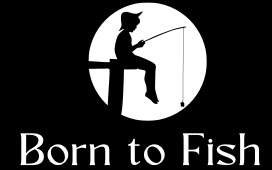Carp fishing is a challenging and rewarding pursuit that requires specialized techniques and tactics. Carp are known for their strength, cunning, and cautious feeding behavior, making them a prized catch for anglers. In this article, we will explore effective techniques and tactics for fishing carp, helping you increase your chances of success on the water.
- Understanding Carp Behavior: To catch carp successfully, it is crucial to understand their behavior. Carp are bottom feeders that prefer feeding in areas with vegetation, gravel beds, or submerged structures. They are most active during dawn and dusk and tend to be more cautious during the day. Learning about their habits and preferred feeding areas will help you target them effectively.
- Pre-baiting: Pre-baiting is a common tactic used by carp anglers to attract and condition fish to feed in a specific area. It involves introducing small amounts of bait to a chosen fishing spot over a period of time. By pre-baiting, you create a feeding hotspot that encourages carp to gather and become more confident in feeding, increasing your chances of success when you actually fish.
- Bait Selection: Selecting the right bait is crucial for carp fishing. Carp have a diverse diet and can be tempted by a variety of baits, including boilies, pellets, corn, bread, and even natural baits like worms and maggots. Experiment with different baits to determine what works best in your fishing location and adapt to the preferences of the carp in that particular waterbody.
- Rig Setups: Choosing the right rig setup is essential for carp fishing. A popular rig is the “hair rig,” which involves attaching the bait to a short piece of line or hair extension away from the hook. This setup allows the carp to suck in the bait without feeling the resistance of the hook, increasing your chances of a successful hookset.
- Presentation and Accuracy: Carp can be quite selective when it comes to feeding. Pay attention to the presentation of your bait and ensure it looks natural in the water. Use a baiting technique that matches the feeding habits of carp, such as using a method feeder or scattering bait around your hook. Accuracy in casting and bait placement is also crucial for enticing carp into feeding.
- Patience and Stealth: Carp can be cautious and easily spooked. Exercise patience and practice stealth when fishing for them. Approach the fishing spot quietly, avoid unnecessary movement, and be patient while waiting for the carp to take the bait. Sometimes, it may take time for them to build up confidence and commit to feeding.
- Reading the Water: Understanding the water conditions is vital for carp fishing. Look for signs of carp activity such as bubbles, feeding swirls, or carp rolling on the surface. Pay attention to wind direction, water temperature, and any visible features that carp may be attracted to, such as overhanging trees or lily pads. Observing the water can provide valuable insights into carp behavior and feeding patterns.
- Playing and Landing Carp: When you hook a carp, be prepared for a spirited fight. Carp are renowned for their strength and endurance. Use a sturdy rod and reel with a reliable drag system to handle their powerful runs. Keep a steady pressure on the fish while avoiding sudden jerks that could cause the line to break. Exercise patience and play the carp until it tires out, then carefully land and handle it with care.
Conclusion: Fishing for carp requires a combination of skill, knowledge, and a scientific approach. Understanding carp behavior, selecting the right bait, employing effective rig setups, and practicing patience and stealth are key elements of successful carp angling. Remember, carp are intelligent fish, and adapting your tactics to match their behavior is crucial. Embrace the science of fishing for carp, and you’ll be rewarded with thrilling encounters and memorable catches.


